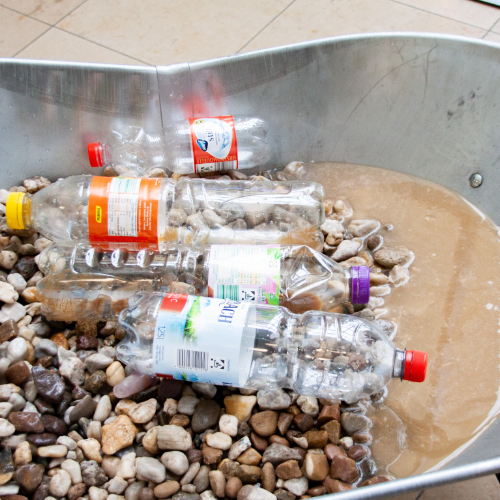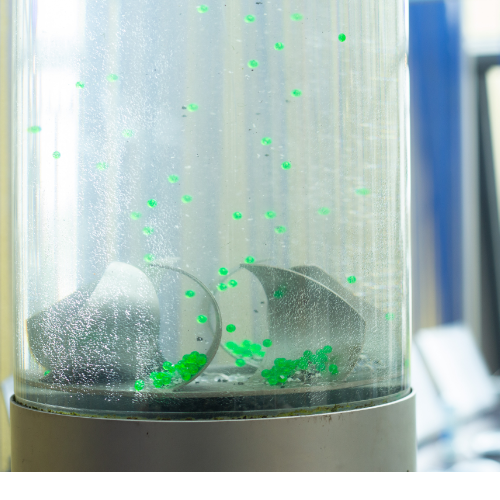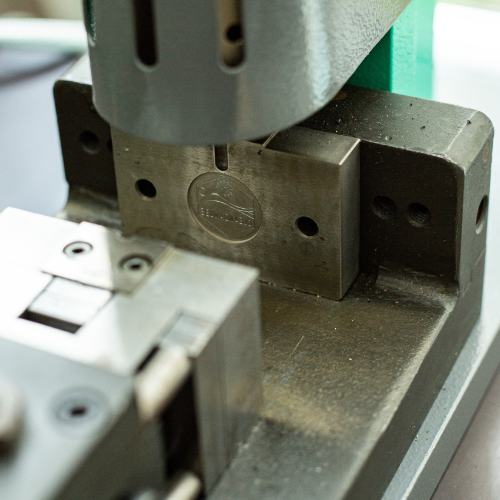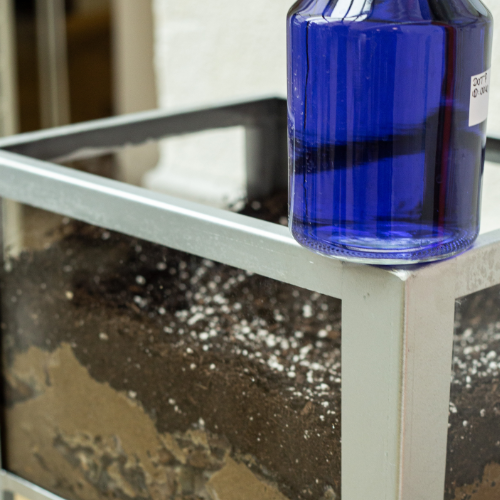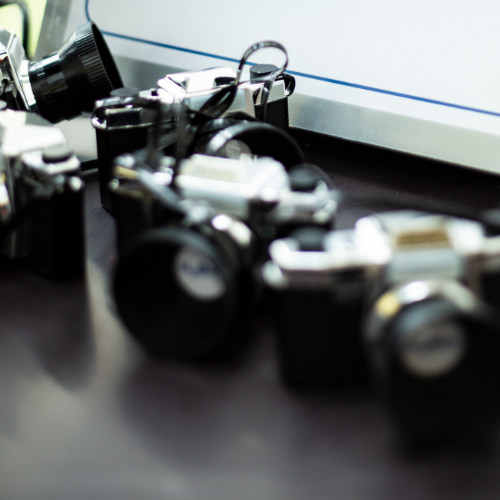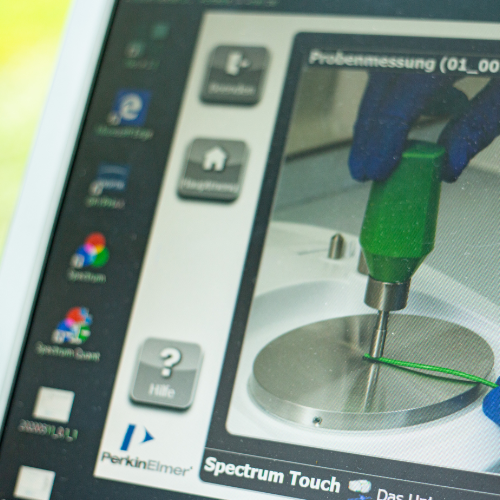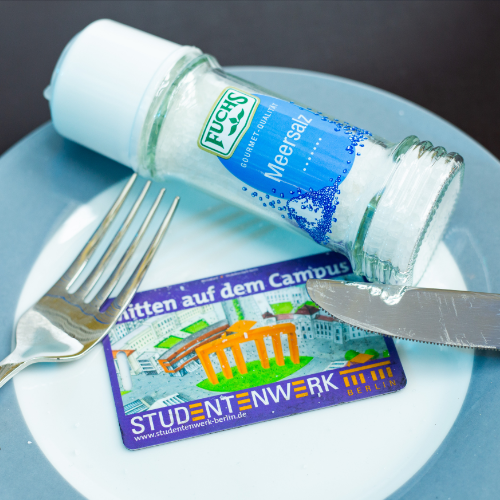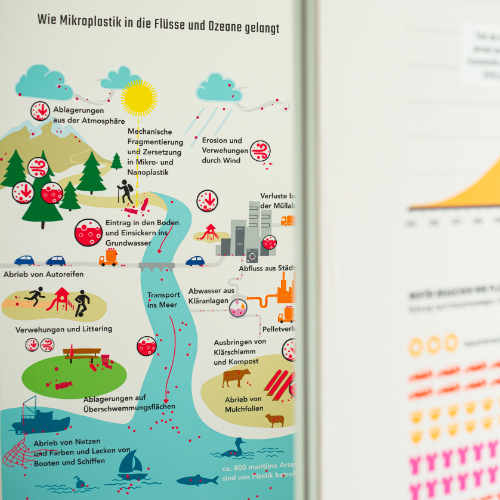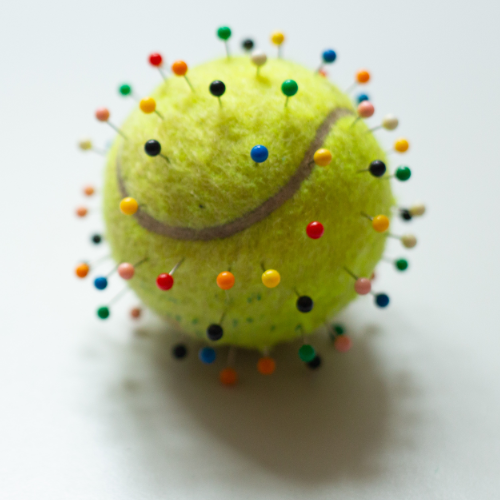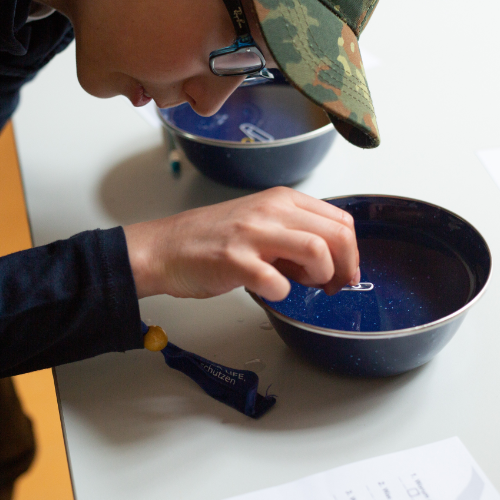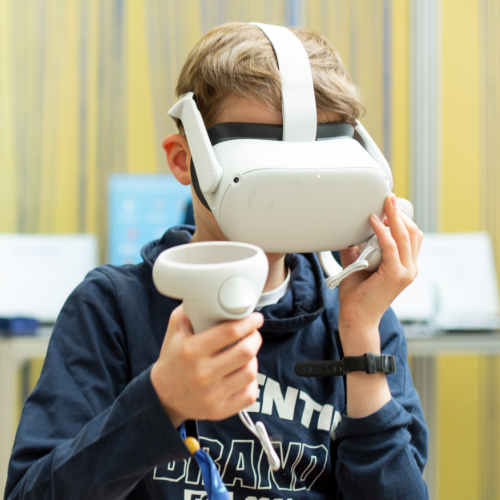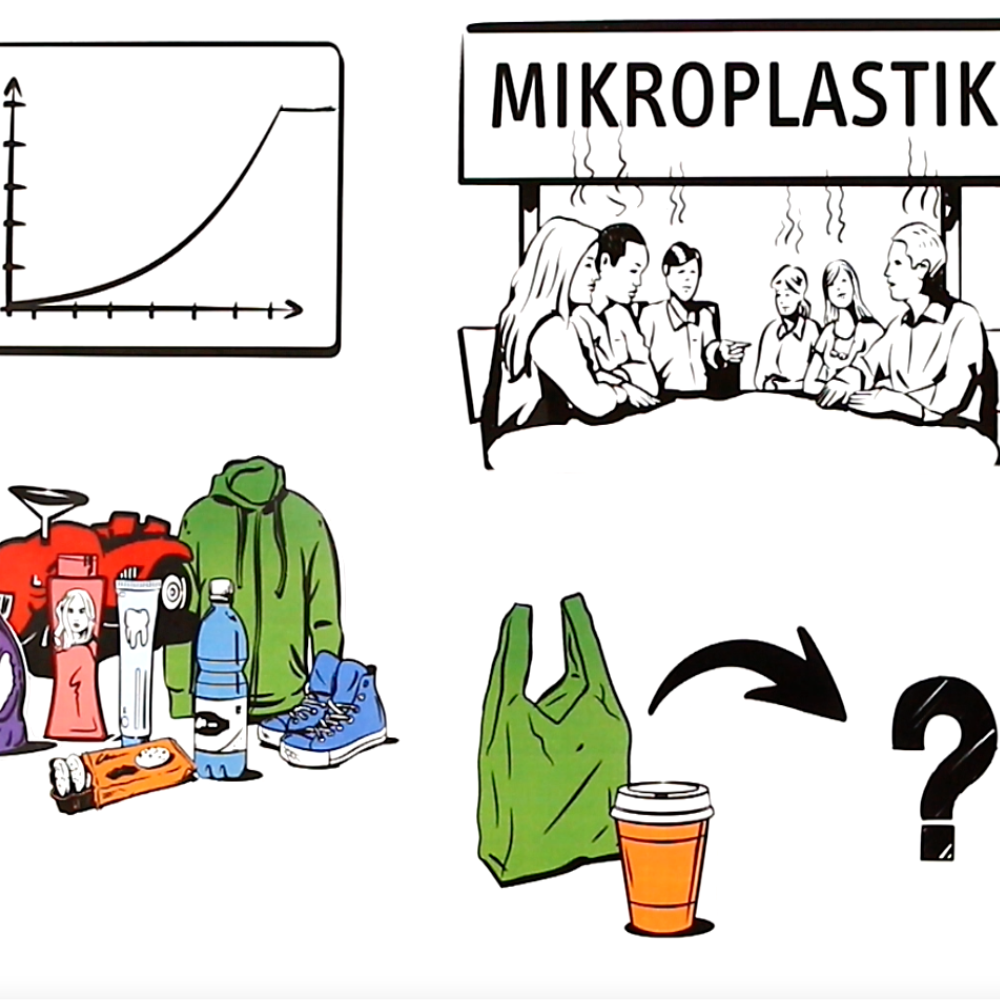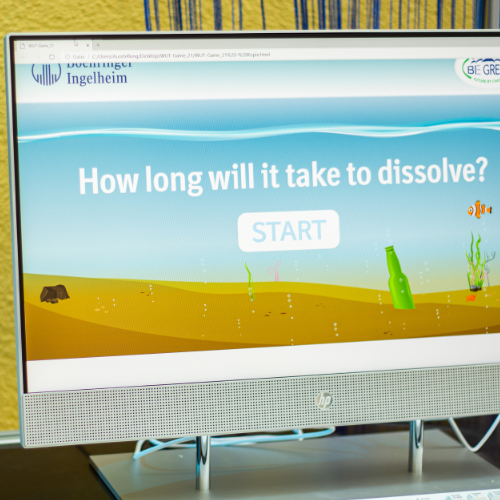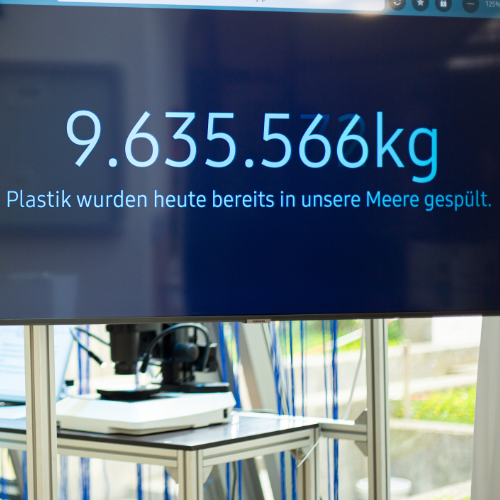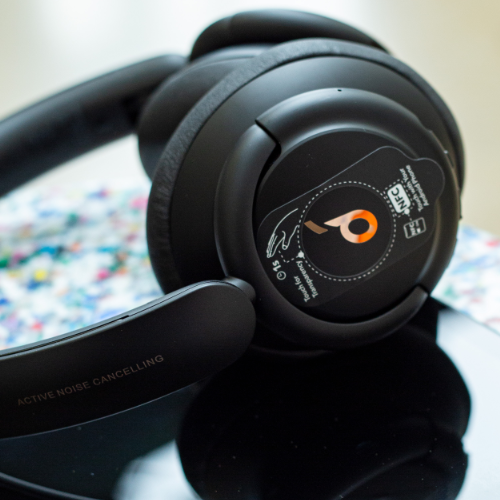Turntable
Tire wear is the biggest source of microplastics. The turntable is equiped with a tire, which can be moved using muscle power. This creates tire wear, which can be examined under a microscope afterwards.
Gravel seesaw
This module shows the creation of microplastics. The movement of the seesaw represents what a plastic bottle goes through after sinking to the riverbed. Small microplastic particles can be found in the water of the seesaw after a short period of time.
Water column
The water column can be set in motion by turning the handle. The plastic particles, that start to move as a result, sink to the bottom after a certain amount of time, showing why we can only find a fraction of the lost plastic at the water surface, whilst the rest is lost forever.
Injection molding machine
Thrown away plastic can be turned into chips for shopping carts thanks to Arburg’s historic injection molding machine. This shows recycling possibilities and explains that dealing with plastic in the right way and reusing it is crucial.
Sediment case
This case contains river sediment, which fulfils a natural cleansing function for our waters. After the coloured water is poured into the case, it runs through the sediment and comes out at the bottom as clean water.
Virtual reality glasses
The virtual reality glasses allow a three-dimensional trip to the under water world, which suffers from plastic pollution worldwide. This visually stunning and shocking experience clarifies, how desperatly we need to protect our environment.
Explanatory film
Our explanatory film describes the formation and spreading of microplastics in a compact and understandable way for young and old viewers. With appealing illustrations and clear messages, the entertaining film can be viewed on a TV.
Computer game
How long does plastic remain in the environment? How many generations will a plastic bottle outlast? With this computer game, guesses can be made before a graphic illustrates how far into the future our plastic waste will endure.
Quiz
In a final quiz, the gained knowledge can be tested and deepened on a tablet. Who has taken away what information? What is important in the behaviour of each of us?
Microscope
Our microscope makes microplastics visible. The results of individual experiments can only be seen magnified – you can take snapshots of the microplastic residues with your own mobile phone.
Click camera
The little click cameras show pictures of animals that have been harmed by plastic. There are pictures of birds whose stomachs are full of plastic. As the images can be disturbing, they can only be seen through the click cameras.
Infrared spectrometer
Plastic can be determined with the infrared spectrometer. One of the biggest problems in recycling are the different types of plastic in packaging . Plastics are also found in materials where we do not expect it.
Microplastic fishing rod
The microplastic fishing rod shows how pollutants attach to microplastics. The magnet on the tweezers can be stirred in dirty water, leading to iron filings sticking to the magnet – this is also what happens to pollutants that adhere to microplastic particles.
Salt grinder
Every week, we consume the average amount of one credit card of plastic (5 grams). Sometimes we sprinkle it on our own food: after the ground salt is dissolved in water, small pieces of microplastic can be found under the microscope.
Timer
The timer shows the amount of plastic in kilograms that has been washed into the oceans of our world as of a certain point in time (e.g. 9 a.m. of the respective day). It runs continuously and increases by 15,000 kg per minute.
Infoboard
Well-founded background information and exciting facts about the threat posed by the plastic flood and microplastics in particular are provided by our information boards. They also show practical tips that we can all implement.
Tennis ball
As simple as it is conclusive – our tennis ball. One of the greatest dangers of microplastics comes from the accumulation of pollutants. We absorb these with the small plastic particles.
Plastic sounds
Plastic can not only be recycled, plastic also makes sounds. This module takes you into the sound world of plastic and plays compositions made from plastic waste collected in nature.
Paper clip
The paper clip experiment makes it easy to see and understand how the surface tension of polluted water changes and why this is dangerous for many aquatic animals.

